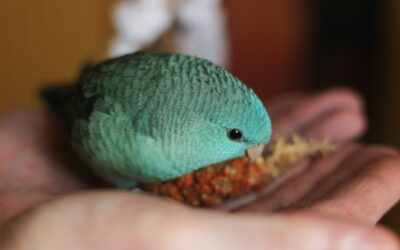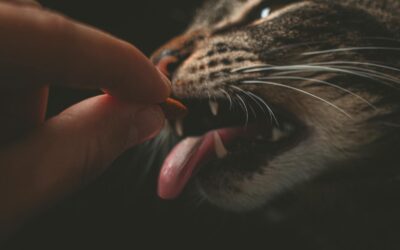Are Chameleons Good Pets?
Chameleons, with their mesmerizing ability to change colors and independently rotate their eyes, are one of nature’s most fascinating creatures. They captivate the hearts of reptile enthusiasts and pet owners alike, but are they truly good pets?
Owning a chameleon can be a rewarding experience, but it’s not a decision to take lightly. Chameleons require specialized care and plenty of attention to thrive in captivity.
If you’re contemplating whether a chameleon is the right pet for you, this blog will walk you through everything you need to know. We’ll explore popular chameleon species, their care requirements, and what kind of commitment is involved in giving these exotic reptiles a happy and healthy life.

Why Do Chameleons Make Good Pets?
Chameleons are exotic, solitary reptiles known for their unique physical attributes and behaviors. Unlike other lizards, such as bearded dragons or geckos, chameleons are arboreal creatures—meaning they spend most of their time in trees. Their slow, deliberate movements, curling tails, and ability to camouflage make them a spectacle to observe.
However, the very traits that make chameleons awesome pets also pose challenges. Chameleons are incredibly delicate, and their highly specialized needs make them less suitable for new pet owners or kids under 12. While they can be great pets for experienced reptile lovers, it’s essential to weigh the pros and cons before deciding to bring one home.

The Pros of Having a Pet Chameleon
Owning a pet chameleon can be a unique and rewarding experience for those who are up to the task. Here are some of the benefits of having a pet chameleon:
- Fascinating and Unique Creatures: Chameleons are renowned for their mesmerizing ability to change colors and their distinctive physical features. Watching them move and interact with their environment can be a captivating and educational experience.
- Low Maintenance: Compared to traditional pets like dogs or cats, chameleons require less maintenance. They don’t need to be walked, groomed, or played with, making them suitable for individuals with busy lifestyles or limited space.
- Quiet Companions: Chameleons are generally quiet and non-vocal creatures. They don’t bark, meow, or make loud noises, making them ideal for those who prefer a peaceful and serene living environment.
- Educational Opportunities: Caring for a chameleon provides an excellent opportunity to learn about their unique behaviors, natural habitat, and specific care requirements. Observing their feeding habits, studying their color-changing abilities, and creating a suitable habitat can all contribute to a deeper understanding of these fascinating reptiles.
- Aesthetic Appeal: Chameleons’ striking colors and interesting physical characteristics make them visually appealing pets. Their presence can enhance the aesthetic of any living space, adding a touch of exotic beauty.
It’s important to note that owning a pet chameleon requires dedicated care and attention to ensure their well-being. If you are willing to invest the time, effort, and resources into creating a suitable environment and meeting their specific needs, a pet chameleon can offer a unique and rewarding companionship.

Cons of Having Chameleons as Pets
While owning a pet chameleon can be a rewarding experience, it’s essential to consider the potential challenges and responsibilities. Here are some of the cons to keep in mind:
- Specialized Care Needs: Chameleons have specific care requirements, including precise temperature and humidity levels, proper lighting, and a suitable habitat. Providing the necessary conditions can be time-consuming and costly, requiring careful monitoring and adjustment.
- Delicate Health: Chameleons are known to be sensitive creatures, prone to stress and health issues if their environment or care is not properly managed. They can be susceptible to respiratory infections, metabolic bone disease, and other health conditions, which may require specialized veterinary care.
- Limited Interaction: While chameleons can be fascinating to observe, they are primarily solitary and not considered as pets for frequent handling or interactive play. They may become stressed or even aggressive when handled, which can limit the bonding experience typically associated with other types of pets.
- Dietary Considerations: Chameleons have specific dietary needs, requiring a variety of live insects and sometimes even specialized diets. Ensuring a consistent and appropriate food supply can be challenging, especially for individuals who are uncomfortable handling live prey or have limited access to a variety of suitable insects.
- Long Lifespan: Chameleons are known for their relatively long lifespans, which can range from five to ten years or even longer, depending on the species. Committing to the care and well-being of a chameleon means accepting the responsibility of their long-term care throughout their lifespan.
Before deciding to bring a chameleon into your home, it’s crucial to thoroughly research their care requirements and assess whether you have the time, resources, and commitment to provide a suitable environment for their well-being.
Popular Pet Chameleon Species
When considering a chameleon as a pet, it’s crucial to choose the right species. Here are three of the most common breeding kept as pets, each with its own characteristics and care needs.
Veiled Chameleon (Chamaeleo calyptratus)
Description: Veiled chameleons are one of the most common pet chameleons, known for their vibrant green coloring and striking casque (a helmet-like structure on their head).
Difficulty: They are considered relatively hardy and are a popular choice for first-time chameleon owners.
Size: They grow up to 24 inches in length, making them one of the larger species.
Special Care: Veiled chameleons are territorial, so they should always be housed alone.
Panther Chameleon (Furcifer pardalis)
Description: Panther chameleons are famous for their stunning, kaleidoscopic colors, which can range from blue and red to orange and green.
Difficulty: They are slightly more demanding than veiled chameleons but are still a great pet for enthusiasts.
Size: They average around 15 to 20 inches in length.
Special Care: They require precise temperature and humidity control to stay healthy.
Jackson’s Chameleon (Trioceros jacksonii)
Description: Known for their “dinosaur-like” appearance, Jackson’s chameleons have three horn-like projections on their heads, resembling a triceratops.
Difficulty: These chameleons are less tolerant of improper care and should only be kept by experienced reptile owners.
Size: They are smaller, typically around 12 inches.
Special Care: They thrive in cooler environments compared to other chameleons.
Lighting and UVB: Provide appropriate lighting, including a UVB source, to mimic natural sunlight and aid in the chameleon’s calcium metabolism.
Humidity: Maintain proper humidity levels by misting the enclosure regularly and using a hygrometer to monitor humidity levels.
Feeding and Supplementation: Offer a varied diet of gut-loaded insects, such as crickets and roaches, along with occasional treats like waxworms. Dust insects with calcium and vitamin supplements to ensure proper nutrition.

What Does Chameleon Care Look Like?
The Habitat Setup
Creating the perfect environment for your chameleon is crucial to their well-being. Here’s what you’ll need:
- Chameleon Cage: Use a tall, well-ventilated enclosure with an emphasis on vertical space for climbing. A screen cage is preferred as it allows proper airflow.
- Plants and Branches: Include live plants like ficus or pothos, along with plenty of branches for climbing.
- Temperature: Chameleons need a temperature gradient in their habitat. A heat lamp is essential for a basking spot (around 85–95°F for basking, 70–80°F for ambient).
- Humidity: Maintaining proper humidity levels (50–80%) is crucial. Use a misting system, drip system, or humidity gauges to achieve this.

Diet and Feeding
Chameleons are insectivores, meaning their diet consists primarily of live insects. So what do Chameleons eat?
- Staple Foods: Crickets, roaches, and phoenix worms make up the bulk of their diet.
- Treats: Wax worms or silk worms can be offered occasionally but are high in fat.
- Water: Chameleons don’t drink from water bowls; instead, they lick water droplets off leaves. A drip system or misting can simulate this.
- Supplements: Dust their food with calcium and vitamin D3 powder to prevent metabolic bone disease.
Handling and Socialization
Unlike dogs or cats, most chameleons prefer to be left alone and handled minimally.
- Avoid Over-Handling: Chameleons can become stressed when handled frequently. Use hand-feeding as a way to build trust if needed.
- Signs of Stress: Changes in color, puffing up, or hissing are signs your chameleon is unhappy and needs space.
Veterinary Care
Chameleons are prone to health issues such as respiratory infections and metabolic bone disease.
- Regular Checkups: Schedule yearly visits with an exotic veterinarian to ensure your pet stays healthy.
- Costs: Vet bills for exotic pets are often higher than for other pets, so be prepared for this financial commitment.

Kate’s K9 Pet Care provides services like same day pet supply delivery, so you can get everything you need for your new Chameleon.

Are Chameleons Good Pets?
Chameleons make excellent pets for the right owner—someone who is patient, observant, and willing to maintain the precise care these exotic reptiles require. They are not suitable for young children or those seeking a pet they can interact with frequently.
Before committing, consider your lifestyle and experience level. If you’re new to reptiles, a veiled chameleon may be a good starting point. For experienced enthusiasts, a panther or Jackson’s chameleon can offer a more rewarding challenge.
For those who take the time to understand and meet their needs, chameleons are not just pets—they are captivating companions that offer a window into the wonders of the natural world.






